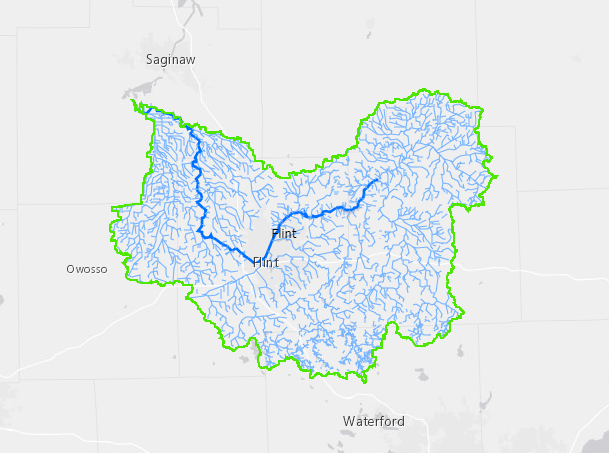Daba Coura Mbow

A key project for IDEAS (the Institute for Data Engineering, Analytics, and Science) this fall, explains its Director Cam Mcleman, associate professor of mathematics, connects UM-Flint’s wildlife biology faculty with scientists at the Flint River Watershed Coalition (FRWC). Joining ongoing efforts to monitor the river’s health, looking at organisms inhabiting the watershed, faculty, and students have joined forces with volunteer groups that regularly traverse various sections of the river network. The groups collect samples and measure the presence of snails, larvae, crayfish, and other crucial species. These metrics serve as key indicators of the stream’s condition throughout the river. The FRWC approached IDEAS for assistance in the use of data science tools to better manage and study the collected data. IDEAS recruited Aaron Moore, an undergraduate majoring in math and data science, as a student researcher. Funded by IDEAS, Aaron’s primary responsibility involves synthesizing several years’ worth of collected data into a comprehensive visualization presented in the form of a map.

The visualization illustrates areas of robust health and highlights areas where organisms are struggling within the river’s ecosystem. The research chiefly centers on the “stream score,” a numerical output generated by volunteers based on their observations of larvae, frogs, and other organisms. IDEAS’ pivotal role lies in digitizing and analyzing the vast array of information received from these volunteers regarding the river’s health across approximately 20 to 30 locations along the Flint River. The primary objective of this collaborative effort is to track changes over time, employing the stream score as an indicator. By meticulously analyzing volunteer-collected data on various river organisms, the research aims to highlight areas warranting attention and those displaying positive trends within the river system. Now, while this is strongly connected to pollution, the core data points they are collecting and sharing focus on the variety and numbers of living things thriving in these rivers.

IDEAS has two key interests here in the Flint River Watershed coalition. First off, they want to put together visuals for everyone to see how aquatic systems are doing. Let’s face it, stats are tough to decode. Imagine handing someone a complex spreadsheet. Most folks struggle to make sense of it. This project is fixing that by turning all that intricate biology and science into a simple, user-friendly display. It’s all about making information available and easy to understand. The second bit is just as important. They are presenting the data this way not just for a public audience but for policymakers too. To get them on board, they need convincing data, numbers, and charts. It’s about showing them why it matters, where it matters, and where to direct their efforts and funding. That’s the big picture for this project. IDEAS is taking care of their end by creating these visuals and maps. But really, the FRWC is the one steering the ship. They are experienced in the work of disseminating the information for the public and for policymakers.

As with any sustained research effort, IDEAS faces a couple of challenges. For instance, there are spots on the map where data is insufficient. Various reasons, such as a shortage of volunteers, hindered them from conducting surveys consistently in these areas. So, they are missing crucial information from these regions. Additionally, there are stretches along the river where they haven’t gathered samples. The more data they gather, the clearer the overall picture will become. In this process, they believe that species-specific data is crucial. This information will provide a richer understanding of the situation at a given time. Currently, it’s a matter of digitizing already collected data and gathering new sampling data.
As a new institute, IDEAS has benefitted from the connection to FRWC already established by the UM-Flint biology faculty. As word gets out, IDEAS will work to identify other areas of need to assist the community. Getting into this project was a real eye-opener for everyone involved, including Cam McLeman and Aaron Moore, who knew little about the wealth of local data on the health of streams and rivers in the watershed. Each data science effort opens doors to new learning. IDEAS will contribute to this important and seemingly unending research effort, and every new form of data science it brings to the effort helps to preserve and improve the health of the ecosystem and the community.
